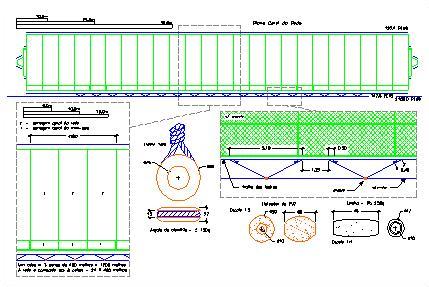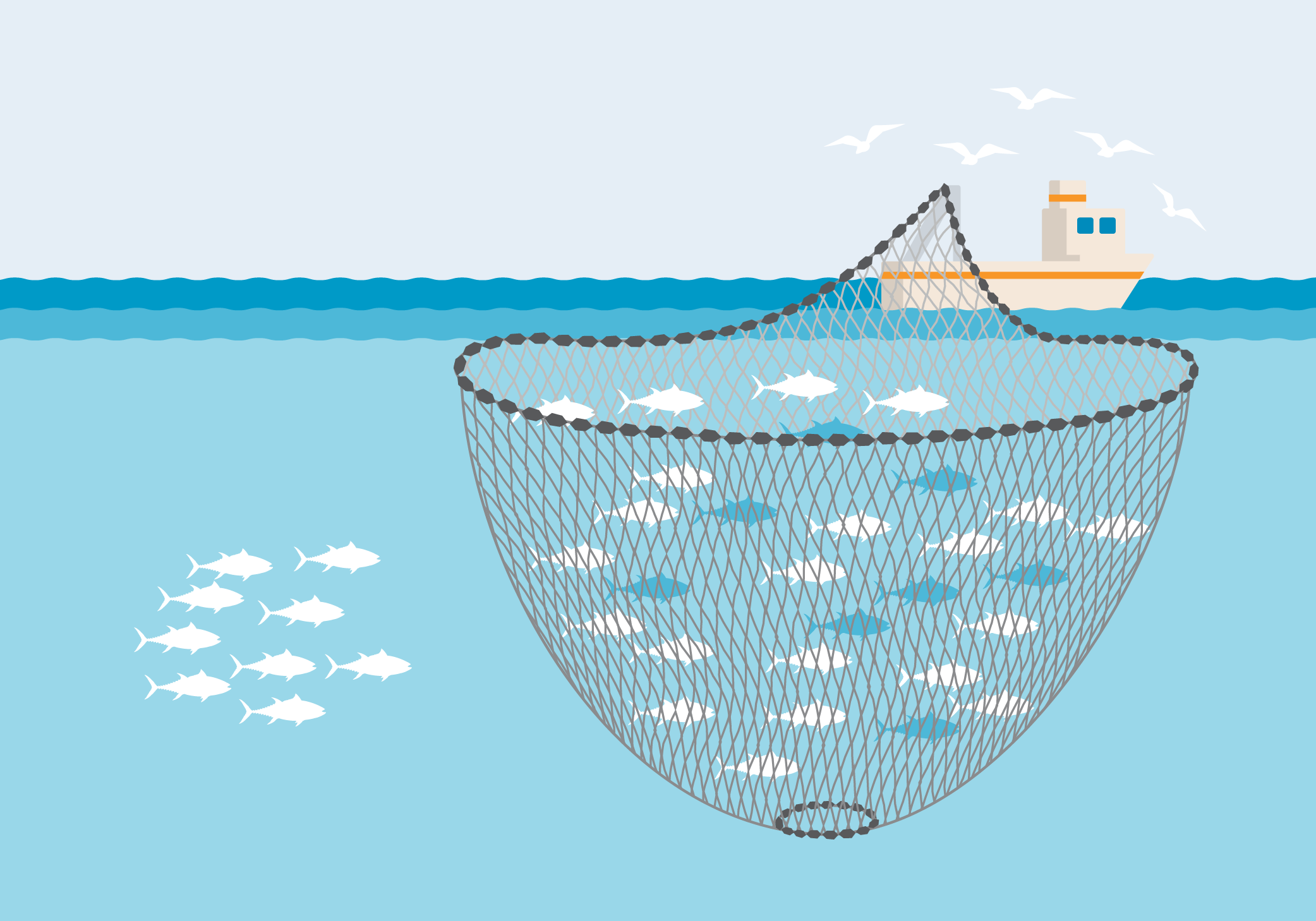Surrounding nets - Purse Seines
Purse seine fishing, is any fishing method that uses long and high net wall, which is released in order to surround the prey and reduce their its ability to escape. It is a widely used method for capturing pelagic species
Surrounding nets - Purse Seines
Breadcrumbs
- Fisheries
- Fisheries
- Professional Fishing
- Local and Coastal Fisheries
- Fishing Gear
- Surrounding nets - Purse Seines
![]() Framework
Framework
Purse seine fishing, is any fishing method that uses long and high net wall, which is released in order to surround the prey and reduce its ability to escape. It is a method used to capture pelagic species. The capture process involves wrapping the fish on the sides and below, preventing them from escaping through the bottom of the net, even when operated in deep water. Often the siege is carried out with the aid of light sources in order to attract and concentrate schools.
![]() Description
Description
The purse seine used on the Continent is characterized by the use of a purse at the bottom of the net, this allows to close the net like a bag in order to retain the catch.
![]() Features
Features
The maximum length and maximum height of the net are defined according to the size of the vessel, varying between 300 and 800 m in length and 60 and 150 m in height.
![]() Mesh classes
Mesh classes
Minimum mesh size: 16 mm.
![]() Target species
Target species
Directed fishing at small pelagics: sardines (Sardina pilchardus), chub mackerel (Scomber japonicus), atlantic mackerel (Scomber scombrus), boga (Boops boops), anchovy (Engraulis encrasicholus) and horse mackerel (Trachurus spp.). The following species can also be captured: seerfishes (Scomberomorus spp.), Atlantic bonito (Sarda sarda), Grey triggerfish (Balistes spp.), Garfish (Belone belone), mullets (Mugil spp., Liza spp., Chelon spp.) And Bluefish (Pomatomus saltatrix). Minimum% of target species per trip: 80%.
![]() Area of action
Area of action
Authorized out of 1/4 mile away from the coast line and, between 1/4 mile and 1 mile, only at depths greater than 20 m, except for “candil” fishing, in the jurisdiction area of Capitania da Nazaré .
![]() Other constraints
Other constraints
- Fishing ban in an area of the Costa Vicentina between 37º 50´N and 37º 00´ from December to February
- Fishing ban 48 hours in each weekend period, with lags depending on the area
- Restrictions on the use of light sources as a decoy
- Specific rules for fishing for live bait to catch tuna.
![]() Images
Images


By courtesy of Marine Stewardship Council
![]() Legislation
Legislation
Ordinance No 1102-G/2000, of 22 November, which approves the Regulation of Fisheries by art of Purse seine, amended by Ordinance No 346/2002, of 2 April and Ordinance No 397/2007, of 4 April.
Ordinance No 296/94, of 17 May, which updates the national legislation in force with regard to zones and periods of fishing ban.
Ordinance No 251/2010, of 4 May, which establishes specific measures relating to the capture, maintenance on board, landing and marketing of sardines, including a 48-hour stop of sardines directed fishing at the weekend, maximum daily landing limits for vessels not members of OP and an annual maximum landing limit for sardines, as amended by Ordinance No 294/2011, of 14 November and Ordinance No 173-A/2015, of 8 June.
Article 2 of Ordinance No 294/2011, of 14 November, determines a sardine fishing interdiction with purse seine for 48 hours each weekend, is foreseeing, in paragraph 5 of the same article, the possibility of changing the stopping period upon prior notification from ANOPCERCO.
Ordinance No 394/2019, of 11 November, establishes the Support Regime for the Temporary Cessation of Fishing Activities with purse seine, as amended by Ordinance No 20/2020, of 27 January.
Ordinance No. 40/2022, of 18 January, which establishes, for the year 2022, an exceptional regime for the capture of accessory species in purse seine fisheries. This ordinance allows for vessels licensed for purse seine that, exceptionally, up to 20 fishing trips per year, the provisions of paragraph 2 of article 7 of Ordinance No. 1102-G / 2000, of 22 of November, in its current wording, don’t apply, so it may be capture any quantity of species other than those listed in paragraph 1 of article 7 of that Ordinance, without prejudice to the applicable discharge obligations.
In accordance with Article 3, vessel owners, under consideration, are obliged to report, within 24 hours, to the Directorate-General for Natural Resources, Safety and Maritime Services (DGRM), these exceptional discharges of accessory species, using for this purpose the functionality provided here.



